Buteo, a genus encompassing a diverse array of large and robust raptors, stands as an emblem of avian adaptability and predatory prowess.
Comprising species commonly known as buzzards and hawks, Buteo members are widespread across diverse habitats, embodying a remarkable range of ecological niches.
These birds of prey are characterized by broad wings, a sturdy build, and a versatile diet that often includes small mammals, birds, and reptiles.
With a global distribution, Buteos are adept at thriving in varied landscapes, from open grasslands and deserts to woodlands and mountainous regions.
Their soaring flights, characterized by distinctive dihedral wing shapes, epitomize their mastery of the skies.
Unveiling the world of Buteo unravels a narrative of adaptability, predation, and the vital role these raptors play in maintaining ecological balance within their respective ecosystems.
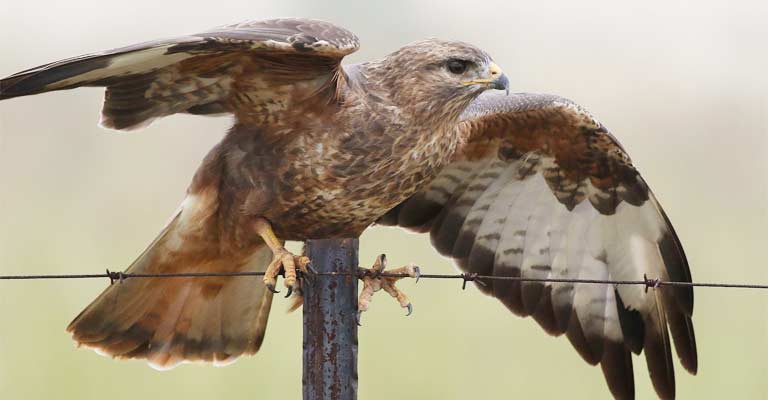
Identifying Characteristics of Buteo
Identifying birds within the genus Buteo, commonly known as buzzards and hawks, involves an exploration of their shared physical characteristics that set them apart from other raptors.
Here are eight key points to aid in the identification of Buteo species:
Size and Build
Buteos are generally large and robust birds of prey. They exhibit a substantial size, with wingspans varying among species but typically ranging from 3 to 4.5 feet.
Their sturdy builds, featuring broad chests and tails, contribute to their overall powerful appearance.
Wing Shape
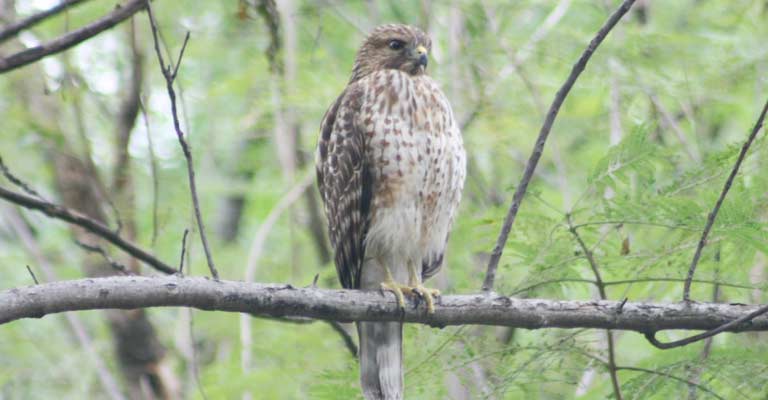
Buteos have broad, rounded wings that facilitate soaring and gliding. This wing structure is adapted for efficient and sustained flight, enabling them to cover large distances while searching for prey.
The wings may form a characteristic dihedral shape, curving upwards at the tips when in flight.
Coloration
The coloration of Buteos varies among species, but they often exhibit earthy tones such as browns, grays, and rufous hues. Many species have mottled or barred plumage, providing effective camouflage in their natural habitats.
Facial Disk
Unlike some other raptor groups like owls, Buteos lack a distinct facial disk. Instead, they have facial markings that can include darker patches or lines around the eyes, creating a subtle contrast against the surrounding plumage.
Tail Features
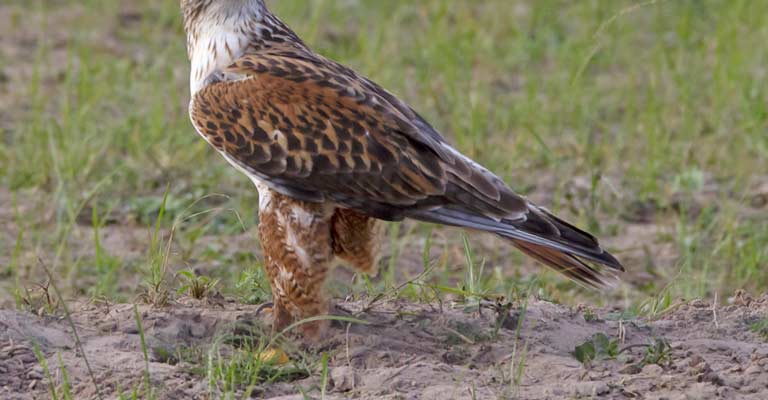
The tails of Buteos are typically rounded and may have distinctive markings.
While some species have banded tails, others may display a terminal band, a dark band at the tip of the tail feathers. Observing these tail patterns aids in identification.
Eye Color
The eye color of Buteos is generally yellow, adding a vibrant touch to their appearance. This coloration complements their earthy plumage and is often visible from a distance.
Behavioral Traits
Buteos are known for their soaring flight patterns. They utilize rising air currents to effortlessly glide, showcasing their mastery of the skies.
Their hunting techniques often involve circling above open areas, and scanning the ground for potential prey.
Distinctive Calls
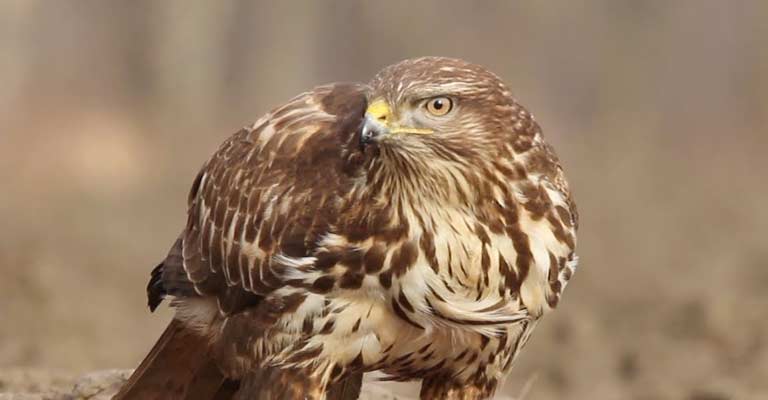
Buteos have characteristic vocalizations that vary among species. These calls include high-pitched whistles, mews, or screams. Familiarizing oneself with these calls can be instrumental in identifying specific Buteo species in the field.
Recognizing Buteos involves an amalgamation of physical traits, including size, coloration, wing shape, and distinctive behaviors.
Whether perched on a tree branch or soaring high in the sky, these characteristics collectively contribute to the unique identity of Buteos within the diverse realm of raptors.
Taxonomy of Buteo
Here is the taxonomical details of Buteo:
| Taxonomic Level | Classification |
| Domain | Eukaryota |
| Kingdom | Animalia |
| Phylum | Chordata |
| Class | Aves |
| Order | Accipitriformes |
| Family | Accipitridae |
| Subfamily | Buteoninae |
| Genus | Buteo |
| Author | Lacépède, 1799 |
The Buteo genus comprises a diverse array of species, demonstrating adaptability to various ecosystems across the globe. Let’s delve into some of these fascinating members:
Buteo buteo vulpinus
Also known as the Common Buzzard or Steppe Buzzard, B. b. vulpinus inhabits parts of Europe and Asia. Recognized for its broad wings and versatile hunting techniques, it’s a notable representative of the Buteo lineage.
Buteo buteo buteo
The nominate subspecies, B. b. buteo, is commonly found across Europe, showcasing the classic characteristics of the Buteo genus. Its plumage varies, adapting to the diverse landscapes it inhabits.
Buteo buteo menetriesi
Endemic to the Far East, B. b. menetriesi is a unique subspecies thriving in regions like Siberia and Northern China. Its adaptation to colder climates reflects the genus’s ability to flourish in diverse environments.
Eastern Red-tailed Hawk
While not part of the Buteo buteo species, the Eastern Red-tailed Hawk (B. j. borealis) is a prominent member of the Buteo genus. Recognizable by its rufous tail and distinctive calls, it is a common sight in North America.
Socorro Red-tailed Hawk
Endemic to the Socorro Island in Mexico, this subspecies (B. j. socorroensis) showcases the adaptive radiation within the Buteo genus, demonstrating how regional variations contribute to biodiversity.
Buteo lineatus elegans
As a subspecies of the Red-shouldered Hawk, B. l. elegans inhabits the western parts of North America. Its striking plumage and distinct calls make it a noteworthy representation of the Buteo lineage.
Buteo japonicus japonicus
The Eastern Buzzard, B. j. japonicus, is native to Japan and adjacent regions. Its presence emphasizes the widespread distribution of Buteo species, showcasing their adaptability across diverse geographic settings.
Buteo buteo pojana
Inhabiting regions of Italy, the B. b. pojana is a testament to the genus’s presence in Europe. Its localized distribution highlights the subtle variations that exist within the Buteo buteo species.
Buteo buteo harterti
Native to the Canary Islands, B. b. harterti exhibits adaptations to island environments. The isolated ecosystems contribute to unique traits within this subspecies, emphasizing the genus’s ability to thrive in varied conditions.
In essence, the Buteo genus offers a comprehensive showcase of raptors adapting to ecosystems ranging from the European landscapes to the islands of the Pacific.
Each species and subspecies within this lineage contributes to the rich tapestry of avian biodiversity, reflecting the genus’s resilience and versatility across the planet.
Buteo Life History
The Buteo genus, encompassing a diverse group of large raptors commonly known as buzzards and hawks, unfolds a compelling life history shaped by their adaptability and predatory prowess.
Exploring their journey from hunting grounds to nesting sites offers insights into their ecological significance and the challenges they face in a rapidly changing world.
Food
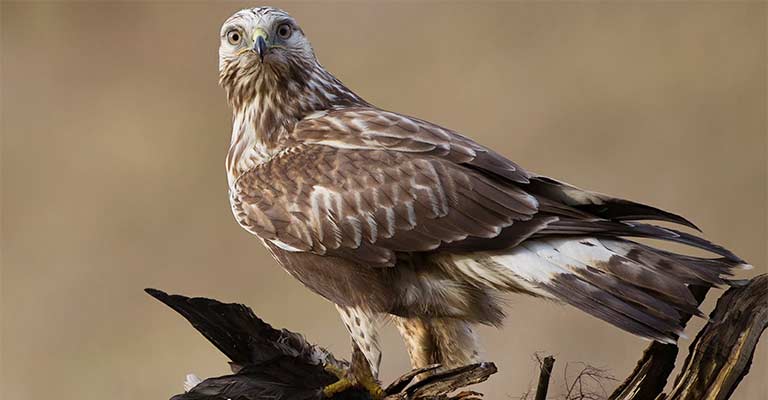
Buteos exhibit a varied diet, showcasing their adaptability as opportunistic hunters. Small mammals, birds, reptiles, and even insects constitute their primary prey.
Their hunting techniques include soaring over open landscapes, utilizing keen eyesight to spot potential prey, and executing precision dives to secure their meals.
Habitat
These raptors thrive in diverse habitats globally, ranging from open grasslands and woodlands to mountainous terrains. Their adaptability allows them to occupy urban areas as well.
A testament to their ecological flexibility, Buteos carve niches in landscapes worldwide, demonstrating their ability to coexist with various ecosystems.
Range Map
The range map of Buteo species spans across continents. From Europe to North America, Asia, and even isolated islands like the Canary Islands, each species has carved out its unique geographic presence.
This wide distribution underlines their global significance within the avian community.
Breeding
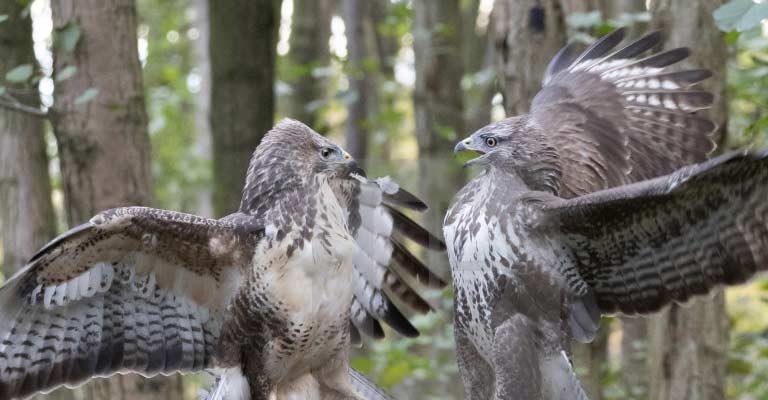
Breeding among Buteos involves establishing territories, courtship displays, and the construction of large nests typically situated in elevated locations like trees or cliffs.
Monogamous pairs invest in raising their offspring, showcasing familial bonds integral to the Buteo life cycle.
Diseases
Buteos may face threats from various diseases, including avian influenza, West Nile virus, and avian pox. Monitoring for signs of illness, such as lethargy or changes in plumage, is crucial for both wild and captive populations.
Treatment
Veterinary intervention is vital when Buteos succumb to diseases.
Captive rehabilitation centers play a significant role in treating injured or sick individuals, providing medical care, rehabilitation, and, when possible, reintroduction into their natural habitats.
Conservation
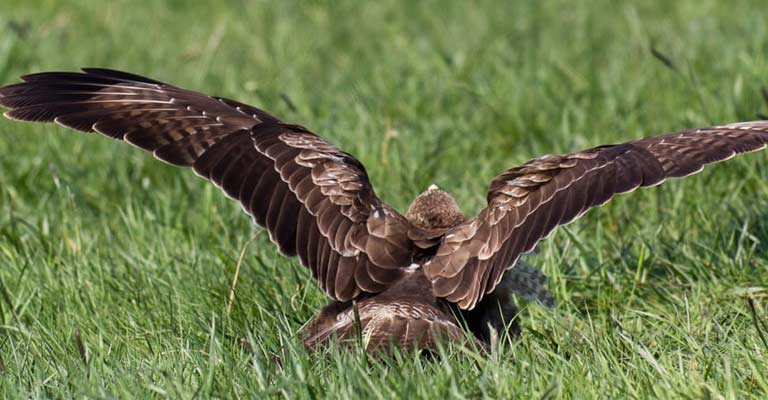
Buteos face conservation challenges due to habitat loss, pesticide exposure, and human-wildlife conflicts.
Conservation efforts involve habitat preservation, monitoring and protection of nesting sites, and raising awareness about the vital role these raptors play in maintaining ecological balance.
The life history of Buteos paints a portrait of adaptability, resilience, and ecological interconnectedness.
From their hunting strategies and diverse habitats to the challenges they confront in the face of a changing environment, understanding the life history of Buteos is pivotal for their conservation and the preservation of biodiversity.
Nesting Habit of Buteo
The nesting habits of Buteo species, encompassing buzzards and hawks, reveal a nuanced tapestry of avian behaviors. These raptors typically construct large stick nests situated in elevated locations, such as trees, cliffs, or even man-made structures.
The nests provide a secure environment for incubating eggs and raising offspring. During the breeding season, Buteos engage in elaborate courtship displays, involving aerial acrobatics and vocalizations, to reinforce pair bonds.
Clutch sizes generally range from 2 to 4 eggs, and incubation lasts approximately 4 to 5 weeks. Both parents actively participate in incubation and subsequent care of the nestlings, which undergo a fledgling period of 6 to 8 weeks.
The nests, often camouflaged with pale-colored eggs speckled for concealment, reflect the adaptability of Buteos to diverse habitats, from open landscapes to dense woodlands, underscoring their significance in the intricate web of avian life.
Here are the nesting details in a table:
| Nesting Details of Buteo | Common Traits and Characteristics |
| Clutch Size | Generally 2 to 4 eggs |
| Number of Broods | Often 1 brood per breeding season |
| Egg Length | Varied, typically 2 to 3 inches |
| Egg Width | Varied, approximately 1.5 to 2 inches |
| Incubation Period | Around 4 to 5 weeks |
| Nestling Period | Approximately 6 to 8 weeks |
| Egg Description | Pale-colored with speckles, camouflaged to match the nesting environment |
| Nest Type | Large stick nests, often situated in elevated locations like trees or cliffs |
| Nesting Site | Diverse habitats including forests, woodlands, and open landscapes |
| Parental Involvement | Both parents contribute to incubation and feeding |
| Courtship Displays | Elaborate aerial displays and vocalizations to strengthen pair bonds |
| Fledgling Independence | Juveniles become independent after the nestling period |
| Re-nesting Behavior | In case of nest failure, some species may attempt a second brood in a breeding season |
| Nesting Success Factors | Availability of suitable nesting sites, prey abundance, and minimal human disturbance |
10 Fun Facts About Buteo
Buteo, the genus encompassing various buzzards and hawks, offers a fascinating glimpse into the world of large raptors. These adaptable and powerful birds of prey are known for their distinctive features and captivating behaviors.
Let’s explore 10 fun facts that shed light on the intriguing lives of Buteos.
- Diverse Species: The Buteo genus encompasses a wide variety of raptors, including hawks and buzzards, with over 30 recognized species. This diversity showcases their adaptability to different environments and ecosystems worldwide.
- Global Distribution: Buteos are found on almost every continent, demonstrating their ability to thrive in various habitats, from deserts and grasslands to forests and mountainous regions.
- Versatile Diet: Buteos are opportunistic hunters with a diverse diet. They prey on small mammals, birds, and reptiles, showcasing their adaptability and role as apex predators in their respective ecosystems.
- Soaring Specialists: Recognizable by their distinctive dihedral wing shape, Buteos are exceptional soarers. This aerodynamic design allows them to efficiently glide and survey large areas in search of prey.
- Migration Marvels: Many Buteo species are known for their impressive migratory journeys, covering thousands of miles. This behavior is a testament to their navigational skills and adaptability to changing seasons.
- Distinctive Plumage: Buteos exhibit a variety of plumage colors and patterns. From the dark-banded tail feathers to the mottled patterns on their bodies, these features contribute to their camouflage and visual appeal.
- Courtship Displays: During the breeding season, Buteos engage in elaborate courtship displays. These may involve aerial acrobatics, vocalizations, and intricate movements to strengthen pair bonds.
- Nesting Strategies: Buteos construct large nests made of sticks and other materials, often positioned in trees or on cliffs. The size and location of the nests vary among species, showcasing their adaptability to different environments.
- Long Lifespan: In the wild, Buteos can live for several years, with some species having a lifespan of up to 20 years. This longevity allows them to contribute significantly to their ecosystems over extended periods.
- Conservation Significance: As top predators, Buteos play a crucial role in controlling prey populations, contributing to the overall health of ecosystems. Monitoring their populations is vital for gauging the ecological well-being of the areas they inhabit.
In essence, these fun facts underscore the fascinating attributes of Buteos, emphasizing their adaptability, ecological importance, and the diverse behaviors that make them a captivating group within the world of raptors.
Wrapping Up
Beyond their physical attributes, the life story of Buteo underscores their crucial ecological role as apex predators, helping maintain balance within various ecosystems.
From the open grasslands to mountainous terrains, Buteos have established themselves as master hunters, preying on small mammals, birds, and reptiles.
The dihedral wing shapes that characterize their soaring flights paint a portrait of adaptability, enabling them to navigate diverse landscapes with ease.
As sentinels of the skies, Buteos contribute to the intricate tapestry of nature, offering insights into the delicate relationships between predators and their environments.
Studying the biography of Buteo provides a glimpse into the remarkable world of raptors and their indispensable role in shaping the ecological harmony of our planet.